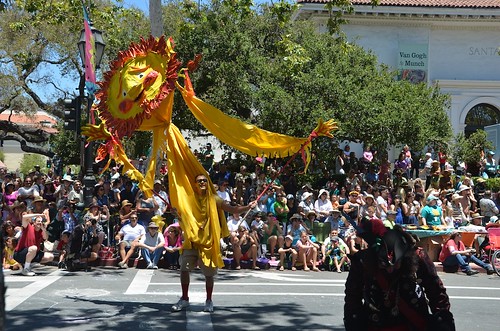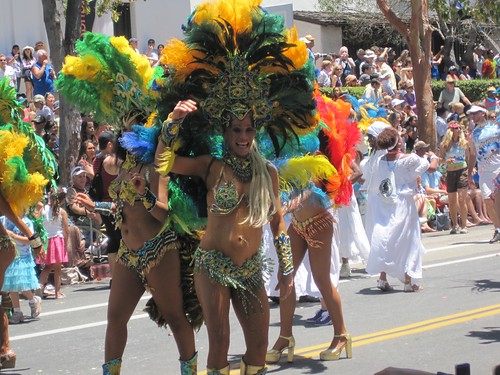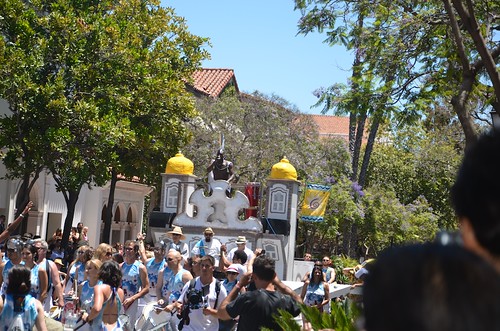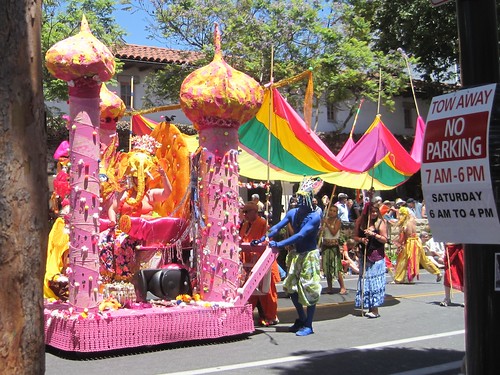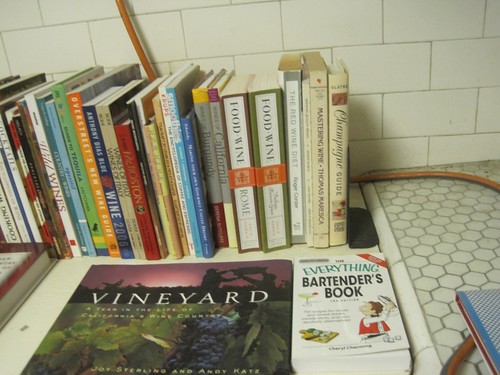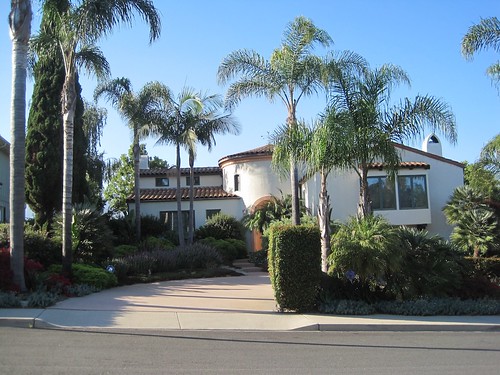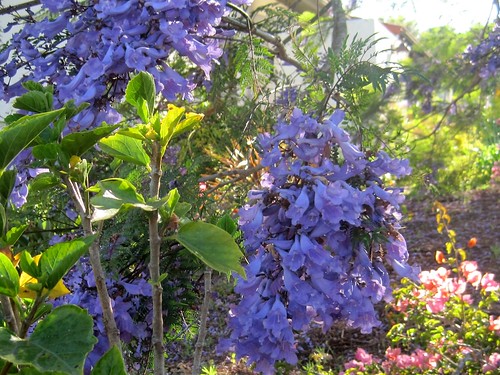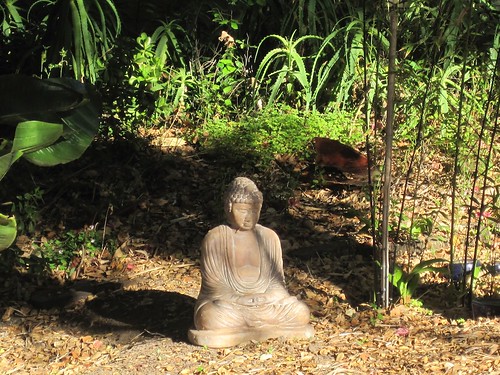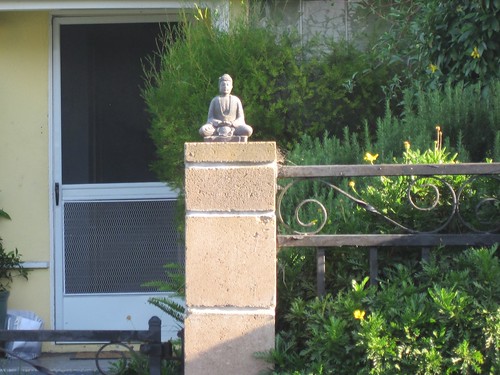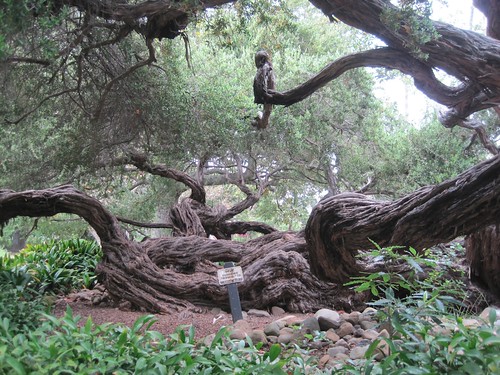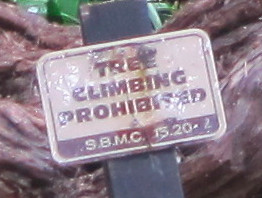"Real bread" was the first food that the 18
survivors of Magellan's circumnavigation of the world ate upon returning home. Their
fleet's one remaining ship had finally landed at the mouth of the Gualquivir in
Spain. For three years, they had been at sea, having
left the Guadalquivir with five ships and 265 men. After spending months out of
sight of land, taking sides in a failed mutiny, witnessing the death of their
leader Magellan and many other comrades, and exploring new territories in South
America and the Pacific, their privations were over and they kissed the earth as they landed.
"For years they had not fingered the soft, aromatic
crumb; for years they had not known the flavours of the wine, the meat and the
fruit of their homeland," wrote Stefan Zweig at the end of his account of
Magellan's voyage. Zweig's Magellan
is an imaginative and dramatically written account of this, the first voyage
around the world. He published it in 1938, but like many of his works, it's
been reissued recently.
Zweig depicted Magellan as a taciturn hero, who acted boldly
but never without forethought, except perhaps in the instance of the one fatal
mistake that led to his death. Zweig was as admiring of and interested in
Magellan's long and careful preparation for the voyage into the unknown as he
is in the voyage itself. He
detailed first the patient preparation of food, ships, and supplies, then the
alternation of plenty and famine as the five, then four, eventually only one
ship, the Victoria, (shown below in an image from Wikimedia, from a 1590 map) circled the globe.

Just decades after Columbus's discovery, when ocean voyages
were extremely long, basic ship's provisions mainly consisted of biscuit (a long-lasting
hard bread that was the mainstay of all ocean trips until modern times). Magellan's ships also carried beans,
lentils, oil, salt pork, cheese, dried fish, and other staples. A few cows would provide milk for the start of the voyage; along with a few pigs, there
could be fresh meat -- though not for long. In both the text and in an appendix, Zweig lists the amounts
and the cost of all these provisions, illustrating Magellan's careful
record-keeping and planning.
Wine was to be served with two meals a day during the
voyage: Magellan laid in hundreds of casks and bottles. Obviously he also
provided what he hoped would be adequate supplies of drinking water -- though
the ships' reservoirs often became foul and the water after long days at sea
became nearly undrinkable.
Magellan wanted his men to eat well. To the staple supplies
he added intriguing extras: sugar, vinegar, garlic, onions, raisins, figs,
almonds, honey, currants, capers, salt, rice, mustard, quince paste, and flour.
What were the cooks' recipes to be made from these tasty additions to ordinary
ships' provisions? I'm sure no one made any record of such a thing.
Preparing to sail around the world -- which had never been
done before -- Magellan knew that his would be the longest voyage ever planned. He expected few opportunities for re-supplying his five ships. In fact, he
believed the strait between the Atlantic and the Pacific to be far closer to
the equator than the Strait of Magellan, which he discovered. And he found the
Pacific Ocean to be much vaster than expected as well.
Consequently, the enormous food supplies were inadequate. As the five ships finished
the voyage down the coast of South America, a mutiny and the desertion of one
of the ships helped to deplete the supplies. Magellan's underlings, when they
traitorously took over one of the ships, opened the stores to the crew to buy
their loyalty. By that time, perhaps the most luxurious foods like figs,
raisins, currants, and almonds had already been used up -- rations had already been cut significantly.
After coming through the newly discovered strait, the remaining ships had an agonizingly long reach across the Pacific. The crews experienced first
hunger, then scurvy and other forms of malnutrition, and finally (in many
cases) death by starvation. The biscuit, unpalatable when fresh, crumbled and turned
to dust; however, it was the only nutrition available. The sailors eked it out
with sawdust and with the meat of the ship's rats, which became a delicacy. They soaked, boiled, and ate some of the rigging as well.
In contrast, when the starving remnant reached the
Philippines, the welcoming king of Cebu Island offered them feasts of sweet
tropical fruit and other delicacies. Bananas, palm wine, coconuts, exotic
vegetables, and roasted fish with fresh ginger --good food and fresh water brought
them back to life. As they visited various islands, including the Spice Islands
that had always been their goal, they learned to enjoy these treats. Though Magellan was already dead, they claimed the islands for the king of Spain as they had meant to do.
While making their way back to Europe, the voyagers suffered again. By this time, 1520, the route from the Spice
Islands through the Indian Ocean and around Africa was well known. Politics,
however, made the excruciatingly long trip from the Spice Islands back to Spain
even more frustratingly hunger-ridden than the Pacific crossing. Magellan, a
Portuguese by origin, had been rejected by his own king, and thus was sailing
for Spain. All the ports were Portuguese, and his ships and men were labeled pirates in
Portuguese territory -- a price was on every head.
Thus, the survivors had to hurry across the seas without
going into port except once, on a ruse. By the time the last 18 sailors once more tasted the bread and
wine of their homeland, they had been starving for months since their days
of feasting. Moreover, they were starving within a ship loaded with exotic and
unimaginably valuable spices that could do no more for their hunger than the
ocean did for their thirst, according to Zweig's narrative.
Obviously, most of Magellan
is about non-food issues -- though the motive Zweig cited on the very first
page, and which persisted throughout the voyage, was to create a proprietary
Spanish trade route to the Spice Islands to obtain rare spices for European use. I've concentrated on the issues of eating
and starving that were the undercurrent throughout.
Afterthoughts
I'm writing beside a very calm Pacific Ocean beach, thinking
of the naked terror that other parts of these waters must have delivered to
Magellan and his crew. Cormorants roost in the trees and tiny sailboats dash around the harbor. So different!
Two very interesting things in Magellan that are not related to food are:
- Magellan had a Philippino slave who traveled
with the ships and was intended to be an interpreter. When the ship landed in
his land of origin, he thus became the very first man ever to circle the globe. (He
also was caught up in the nasty aftermath of Magellan's death at the hands of a
rival to the Philippine king who welcomed the voyagers, and thus remained in
his own country when the ships left.)
- Upon their first stop at a port on the African
coast, when they were almost back to Spain, the surviving sailors discovered
the paradox that their carefully maintained ship logs recorded the day of the
week as Wednesday, but the local date was Thursday. Being the first men to make a
full trip around the world, they discovered that you need an international
dateline (to explain it with an anachronism). Zweig says this was incredible to
the people of that era: "as exciting to the humanists of the sixteenth
century as has been the theory of relativity to those of our own
generation."
I enjoyed Zweig's book and its rather retro style of writing historic narrative.
My only reservation is that he sometimes overuses Homeric similes.
